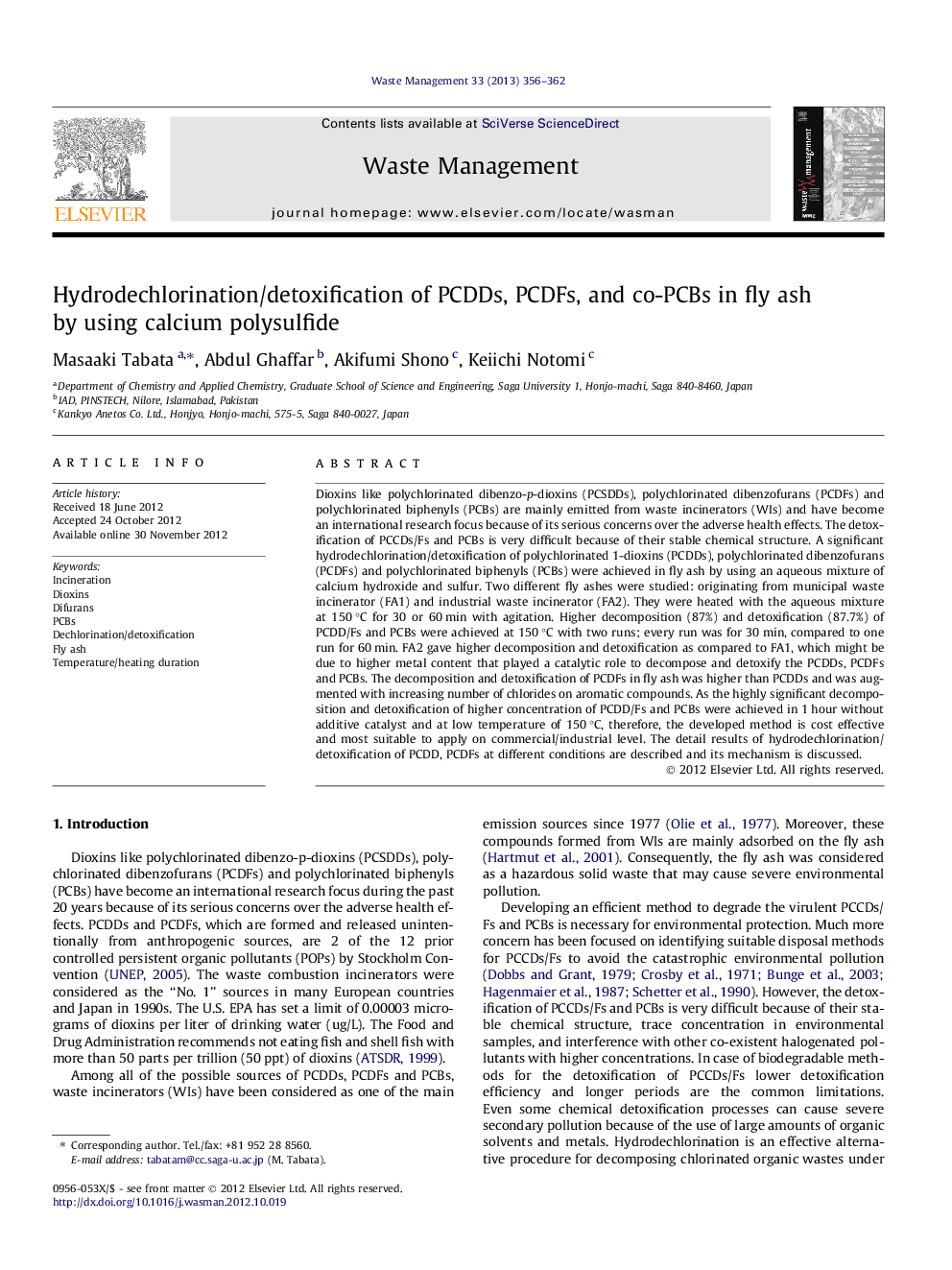| Article ID | Journal | Published Year | Pages | File Type |
|---|---|---|---|---|
| 4472075 | Waste Management | 2013 | 7 Pages |
Dioxins like polychlorinated dibenzo-p-dioxins (PCSDDs), polychlorinated dibenzofurans (PCDFs) and polychlorinated biphenyls (PCBs) are mainly emitted from waste incinerators (WIs) and have become an international research focus because of its serious concerns over the adverse health effects. The detoxification of PCCDs/Fs and PCBs is very difficult because of their stable chemical structure. A significant hydrodechlorination/detoxification of polychlorinated 1-dioxins (PCDDs), polychlorinated dibenzofurans (PCDFs) and polychlorinated biphenyls (PCBs) were achieved in fly ash by using an aqueous mixture of calcium hydroxide and sulfur. Two different fly ashes were studied: originating from municipal waste incinerator (FA1) and industrial waste incinerator (FA2). They were heated with the aqueous mixture at 150 °C for 30 or 60 min with agitation. Higher decomposition (87%) and detoxification (87.7%) of PCDD/Fs and PCBs were achieved at 150 °C with two runs; every run was for 30 min, compared to one run for 60 min. FA2 gave higher decomposition and detoxification as compared to FA1, which might be due to higher metal content that played a catalytic role to decompose and detoxify the PCDDs, PCDFs and PCBs. The decomposition and detoxification of PCDFs in fly ash was higher than PCDDs and was augmented with increasing number of chlorides on aromatic compounds. As the highly significant decomposition and detoxification of higher concentration of PCDD/Fs and PCBs were achieved in 1 hour without additive catalyst and at low temperature of 150 °C, therefore, the developed method is cost effective and most suitable to apply on commercial/industrial level. The detail results of hydrodechlorination/detoxification of PCDD, PCDFs at different conditions are described and its mechanism is discussed.
Graphical abstractFigure optionsDownload full-size imageDownload as PowerPoint slideHighlights► Higher decomposition/detoxification of PCDDs, PCDFs and PCBs were achieved by fly ash at 150 °C. ► Higher metal content of fly ash played a catalytic role to decompose/detoxify the PCDDs and PCBs. ► Calcium polysulfide in water decomposed to provide Ca(SH)2, Ca(OH)2 Ca(SH)(OH) and CaS and CaSx. ► CaS and CaSx act as strong reducing agent to reduce chlorinated compounds to form CaSO4 or CaSO3. ► The developed method is cost effective and suitable to apply on commercial /industrial level.
